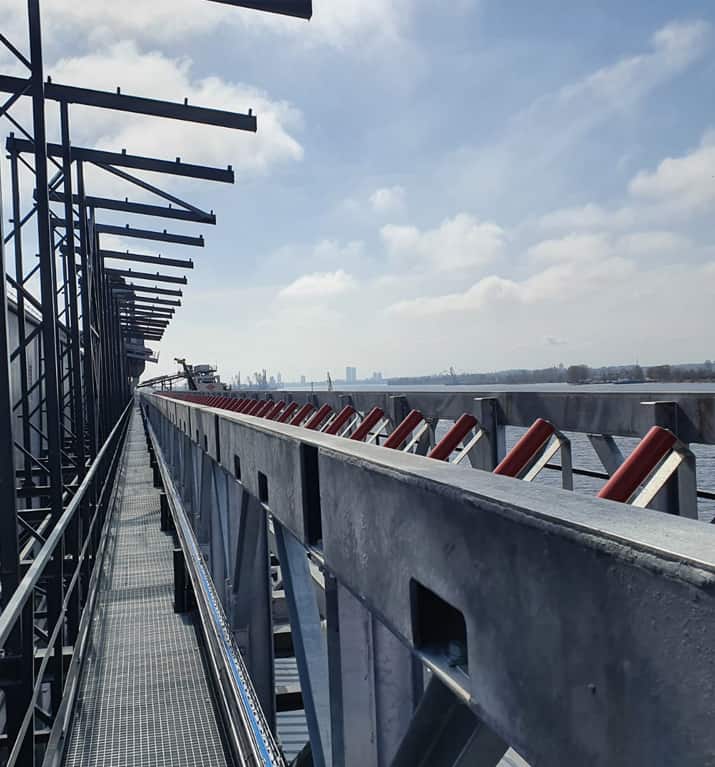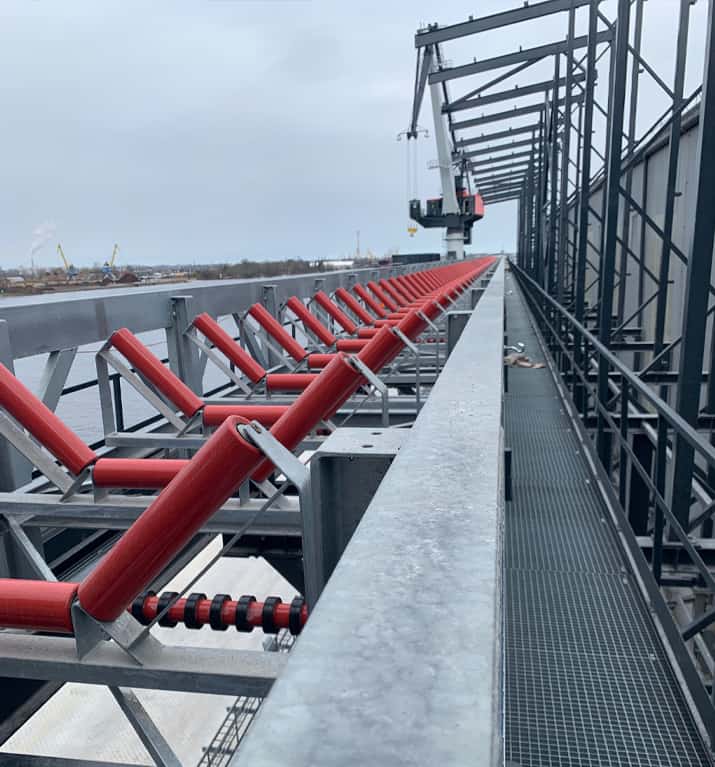They are an integral part of the material handling infrastructure, ensuring the seamless transfer of goods between various modes of transportation, storage areas, and ships. Here’s how conveyors are used in ports and terminals:


Conveyors are commonly used to load and unload bulk cargo, such as coal, iron ore, grains, and aggregates, onto or from ships. Shiploaders and ship unloaders equipped with conveyor systems enable continuous and efficient loading and unloading processes.
Conveyor bridges or gantries span across waterways or docks, allowing the transfer of cargo from shore to ship and vice versa. These structures accommodate the loading and unloading of bulk cargo onto ships, improving the efficiency of port operations.
Conveyors transport bulk materials like grains, cement, and ore within the terminal, ensuring the smooth flow of cargo from storage to ship or from ship to storage.
Conveyors help create and manage stockpiles of bulk materials, optimizing storage and minimizing the space required for material handling.
Dust suppression systems integrated with conveyors help reduce environmental concerns by minimizing dust emissions during cargo transfer and handling.
Conveyor systems in ports often incorporate environmental safeguards, such as spill containment systems and noise-reduction measures, to comply with environmental regulations.
Conveyors are used to transfer bulk cargo between railcars and other transportation modes, ensuring efficient intermodal logistics.
Conveyor systems are often customized to meet the specific needs of different types of cargo and operational requirements in ports and terminals.
Conveyor systems are a cornerstone of modern port and terminal operations, helping to increase throughput, reduce loading/unloading times, minimize labor costs, improve safety, and enhance overall efficiency in the global movement of goods. They are essential components of the logistics infrastructure that connects land and sea transportation networks, making international trade and commerce possible on a large scale.


